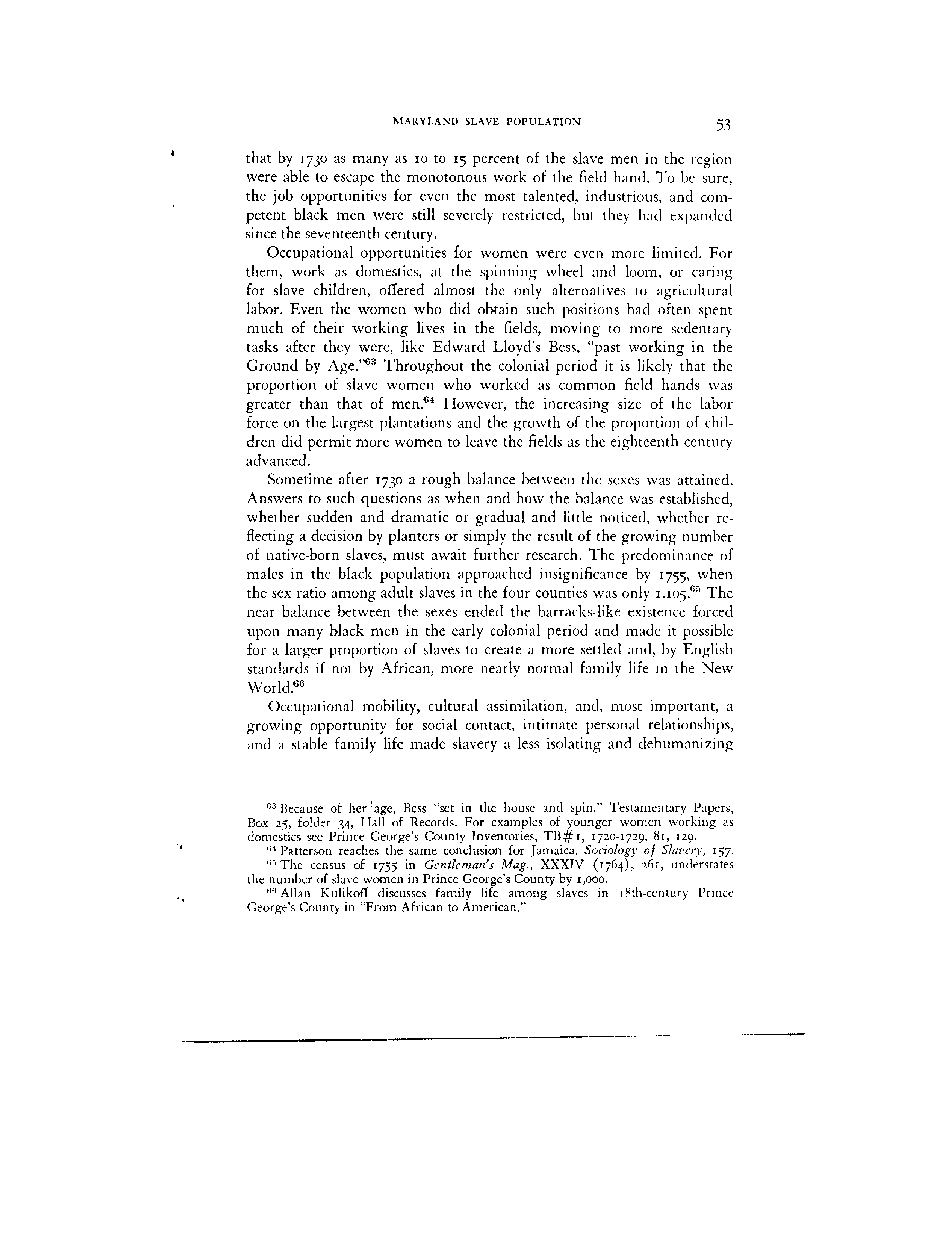|
MARYLAND SLAVE POPULATION 53
that by 1730 as many as 10 to 15 percent of the slave men in the region
were able to escape the monotonous work of the field hand. To be sure,
the job opportunities for even the most talented, industrious, and com-
petent black men were still severely restricted, but they had expanded
since the seventeenth century.
Occupational opportunities for women were even more limited. For
them, work as domestics, at the spinning wheel and loom, or caring
for slave children, offered almost the only alternatives to agricultural
labor. Even the women who did obtain such positions had often spent
much of their working lives in the fields, moving to more sedentary
tasks after they were, like Edward Lloyd's Bess, "past working in the
Ground by Age."*3 Throughout the colonial period it is likely that the
proportion of slave women who worked as common field hands was
greater than that of men.64 However, the increasing size of the labor
force on the largest plantations and the growth of the proportion of chil-
dren did permit more women to leave the fields as the eighteenth century
advanced.
Sometime after 17^0 a rough balance between the sexes was attained.
Answers to such questions as when and how the balance was established,
whether sudden and dramatic or gradual and little noticed, whether re-
flecting a decision by planters or simply the result of the growing number
of native-born slaves, must await further research. The predominance of
males in the black population approached insignificance by 1755, when
the sex ratio among adult slaves in the four counties was only i.io5.fio The
near balance between the sexes ended the barracks-like existence forced
upon many black men in the early colonial period and made it possible
for a larger proportion of slaves to create a more settled and, by English
standards if not by African, more nearly normal family life in the New
World.66
Occupational mobility, cultural assimilation, and, most important, a
growing opportunity for social contact, intimate personal relationships,
and a stable family life made slavery a less isolating and dehumanizing
03 Because of her'age, Bess "set in the house and spin." Testamentary Papers,
Box 25, folder 34, Hall of Records. For examples of younger women working as
domestics see Prince George's County Inventories, TB#i, 1720-1729, 81, 129.
04 Patterson reaches the same conclusion for Jamaica. Sociology of Slavery, 157.
"5 The census of 1755 in Gentleman's Mag., XXXIV (1764), 261, understates
the number of slave women in Prince George's County by 1,000.
CG Allan Kulikoff discusses family life among slaves in iSth-century Prince
George's County in "From African to American."
�
|

